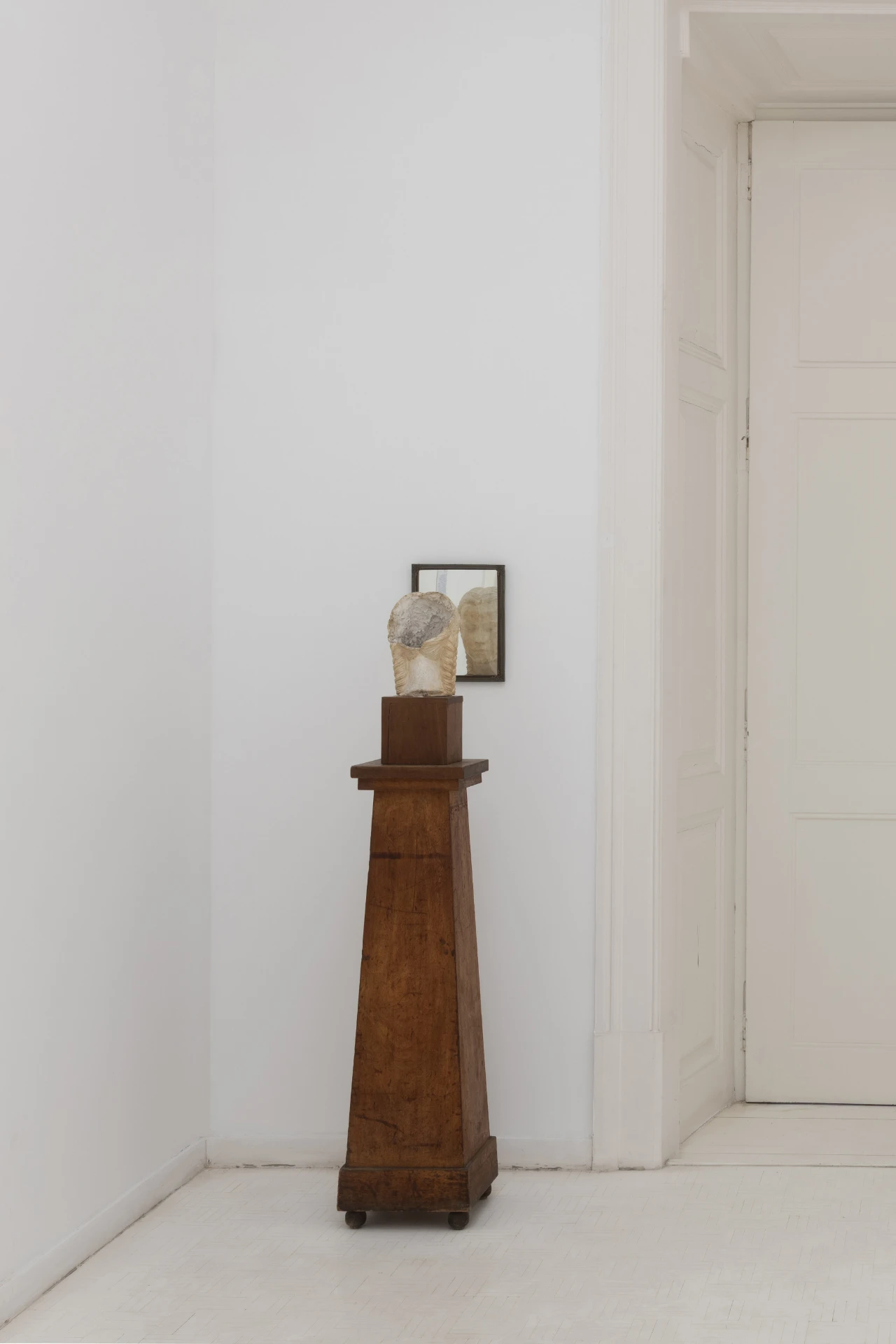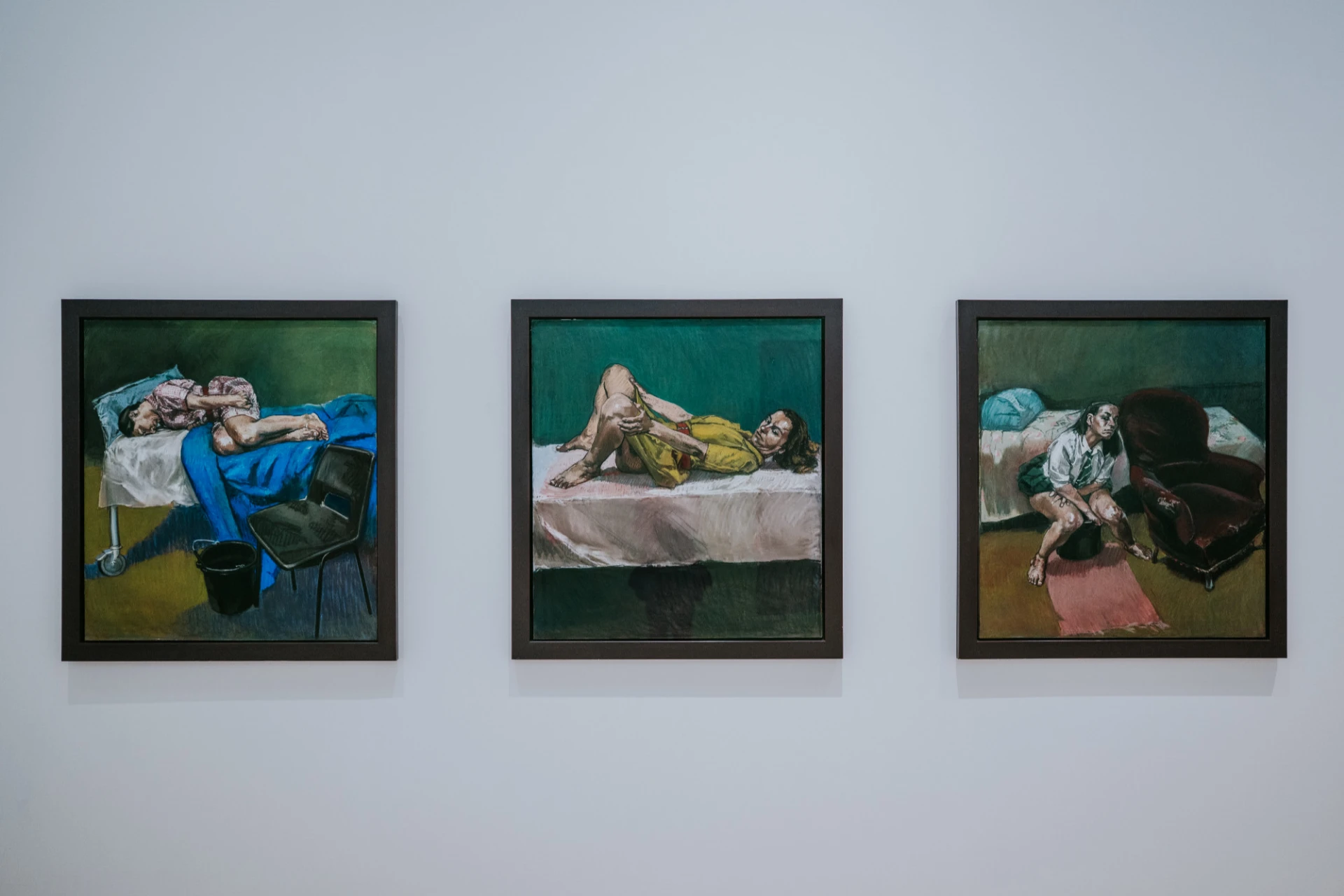article
Between Your Teeth: From the guts to mermaids
The exhibition ‘Entre os Vossos Dentes’ (Between Your Teeth) presents a fertile relationship between the works of Brazilian artist Adriana Varejão and Portuguese artist Paula Rego. The dialogue that is created and highlighted between the work of these artists amplifies two main layers of the exhibition: firstly, the visually disorienting impact of the work of these two artists; secondly, a particular shift in the way female experiences and narratives are being presented, politically and socially.
In his seminal text Making Sex: Body and Gender from the Greeks to Freud, American historian Thomas Laqueur traces a historical overview of how female sexuality has been viewed by science over the centuries. While in the 17th century, the theory of single sex understood male and female morphologies as variations of the same morphology, in the following century these were already recognised as distinct structural constructions. Upon realising that, unlike male biology, the female body does not depend on orgasm to become pregnant, the in-depth study of female biology began to be neglected by medicine. From a cultural point of view, we perceive this change as an evident stance that traces the social relevance and representation (in the visual arts, literature, cinema, etc.) of women as closely associated with their fertility and sexuality, in addition to crystallising a position of women as the other, the mysterious.
Between Your Teeth shows the portrait of two female experiences separated by the Atlantic, but united by the universal female experience of pain and courage. The curatorial selection, signed by Adriana Varejão, Helena Freitas and Victor Gorgulho, exposes a dialogue that not only contrasts the works of Varjão and Rego, but also opens up points of access to the body and the historical role of women, not through the lens of reproduction or uberity, but rather through bodily interiority. Intimacy is thus also guided by its etymological entrails: inside, in the viscera, in the intestines.
The female body is presented with torn skin and exposed entrails. In the contrast between Varejão's works Mapa de Lopo Homem and Filho bastardo II (Cena de interior) and Rego's A primeira missa no Brasil, we see a portrait of the wound of Portuguese colonialism through the role played by women in this context. The extensive wound, fleshy and pulsating, that tears through the map created by Varejão, and the empty eyes and narrative ambivalence (what are we observing? An abortion?) of Rego's character encapsulate the silent history of women in world history: the history of pain. As critic and curator Elena Crippa notes in her text Não podemos libertar-nos sem corpo: ‘Paula Rego and Adriana Varejão experienced first-hand how power acts on those who do not possess it.’
It is not uncommon for the figure of women to be traditionally placed as an illustrative accessory when art takes on the task of recounting historical conquests and revolutions; or even as the personification of conquered territories, as in Jean Van der Straet's engraving America (in which the colonised territory of America is represented as a naked woman lying on a hammock to welcome Columbus and his caravels), or François Boucher's allegories, in which the continents of Africa and America are also depicted as naked women. In Between Your Teeth, Rego and Varejão explore blood, viscera and abortion as forms of representation of the female body in historical images. We see bodies that serve themselves, their own history. In the words of Brazilian curator Rafael Fonseca: ‘This is a way of producing images that also makes it possible to bring Rego and Varejão closer together and distance them: their abilities to research, analyse and manipulate different iconographies, stories and, of course, mysteries.’
Fonseca also writes in his text about the exhibition that the act of mixing images and signs from different periods is a work of de-canonisation of the image, which, in this case, can be expanded to the de-canonisation of how the female body is exploited in the role of character and agent. We can observe this position as part of a contemporary collective movement of women's internalised gaze. Discussions about perimenopause and menopause, for example, have been dominating the cultural discourse in an unprecedented way, as we can see in On All Fours, by American writer Miranda July. The same is true for the renaissance of the gore film genre, this time especially applied to the female body, as was the case with another critical success, the film by French director Coralie Fargeat, The Substance. Both works mentioned are from 2025. In this sense, the curatorship of Between Your Teeth echoes a macro trend of repositioning the conversation about women's bodies from an internal and sterile point of view – the body that exists for itself and by itself, refusing to serve the desires of being consumed or the conceptive service of society.
It is striking to observe the interpretation of the Brazil-Portugal colonial dynamic through the internal exploration of the body, an interpretation that is amplified when the works of Rego and Varejão are placed side by side. In Eyewitnesses X, Y and Z, Varejão refers to the paintings of Mexican castes that sought to classify miscegenation during Spanish colonisation. The women portrayed – each symbolising one of the Portuguese colonial territories – display a bloody hole where one of their eyes has been removed. Next to the portraits, the eyes are exposed and contain small images of anthropophagy, emulating the forensic optography technique in which the iris is removed and studied in order to recover the last image seen in life. The exposed flesh of these anonymous women, accompanied by the mysterious scenes contained in their removed eyes, reverberates the different scenes in Vasto mar de sargaços, in which Rego depicts various episodes featuring equally anonymous characters in what appears to be a family or community gathering. It is not possible to discern what is happening in each of the scenes, but an unsettling sense of tension and illness (with bodies twisted as if fainting or vomiting) dominates the narrative setting. In the centre, a woman who appears to be sleeping, while exuding sensuality, contrasts with the character directly below her: another woman, now in a wedding dress. The blatant physical domination of the body amplifies the psychological domination of women forced to play social roles in Rego's painting, just as the social arrangement of the painting amplifies the perversion of a society that exploits and subjugates other human beings, as portrayed by Varejão.
The exhibition closes with the figure of the mermaid, a mythological creature that embodies several of the characteristics of the historical role played by women: the role of the other, the mysterious, the saboteur, the supernatural. Paulo Rego's Little Mermaid and Mermaid dialogue with Varejão's Imperfect Pearl, and we see figures that are both desolate and displaced, occupying the place once destined for sirens. And crowning this portrait are the Flying Mermaids, mermaids with dry, geriatric bodies who enjoy the absolute freedom of serving only themselves.
By bringing Rego and Varejão together, the exhibition restores to flesh the power to be language, to pain the status of memory, and to intimacy the right to a voice – from the guts to the mermaids.
The exhibition can be visited at the Gulbenkian's CAM until 22 September.
BIOGRAPHY
Barbara Mastrobuono is a Brazilian editor and critic who lives between Lisbon, Berlin and São Paulo. She has served as editor-in-chief at major institutions such as the Pinacoteca do Estado de São Paulo and SP–Arte, and is currently director of the independent space Espaço.CC. She collaborates with the Berlin-based studio Yukiko and works as an independent editor.
ADVERTISING
Previous
agenda

11 Sep 2025
BoCA 2025 kicked off yesterday in Lisbon and Madrid
By Umbigo
Next
article

15 Sep 2025
...On Thin Ice, by Noé Sendas
By Carla Carbone
Related Posts
